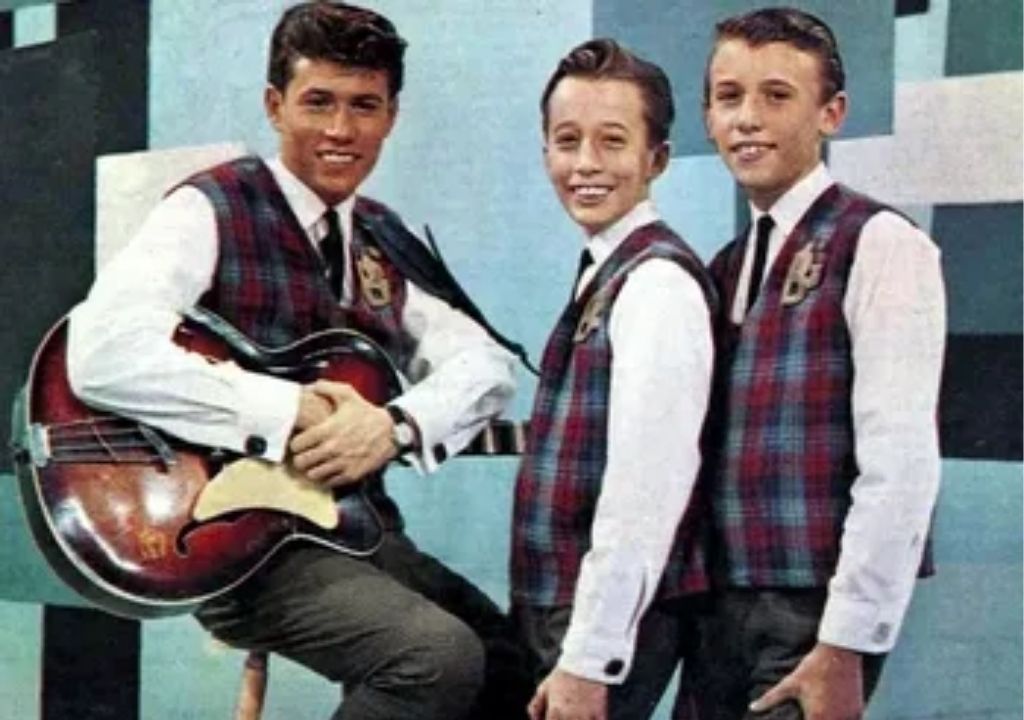
From humble beginnings on the Isle of Man, the Bee Gees — brothers Barry, Robin, and Maurice Gibb — forged a path through struggle, reinvention, and sheer determination to become icons of a music era. Their voices, rich with harmony and emotion, echoed a journey that is nothing short of extraordinary.
Born in the 1940s to a musical family — a drummer father and a vocalist mother — the brothers were destined to sing. Early on, they mimed to records in a local Manchester cinema until a broken record forced them to step into the spotlight live. “It was accidental; we didn’t realize our voices blended so well until that moment,” Barry Gibb would later reflect, marking the genesis of their legendary harmony.
Seeking new horizons, the Gibb family moved to Australia in the late 1950s. There, the young trio endured thirteen failed singles yet kept their passion alive amidst the burgeoning entertainment landscape of Brisbane. Robin Gibb recalls those challenging days:
“Every ‘no’ was tough, but it made us stronger. We learned resilience on the hardest stages, in front of the smallest crowds.”
Their breakthrough came in the mid-1960s when the Bee Gees gained traction, then skyrocketed upon returning to Britain in 1967. Signing with famed manager Robert Stigwood—the man behind the Beatles’ success—they flooded the international airwaves with haunting and wistful tunes like “New York Mining Disaster 1941” and “Massachusetts.”
But fame was a double-edged sword. Tensions within the group surfaced, with Robin briefly departing in 1969, fueling speculation of family disputes. Yet, the brothers reunited powerfully, releasing “How Can You Mend a Broken Heart,” a heartfelt melody that mended their bond and conquered the charts.
Despite this, the group’s popularity waned in the early 1970s. Facing dwindling audiences, the Bee Gees returned to small club venues, their future uncertain. Redemption arrived with producer Arif Mardin, who helped reinvent their sound. Hits like “Jive Talkin'” and “Nights on Broadway” marked a shift toward rhythm and blues, breathing new life into their music.
The zenith of their reinvention came with the soundtrack to “Saturday Night Fever” in 1977. Featuring anthems like “Stayin’ Alive,” “How Deep Is Your Love,” and “Night Fever,” the album didn’t just top charts; it defined a global cultural movement. The Bee Gees’ six consecutive No. 1 hits cemented their status as disco royalty.
Legendary music historian Dr. Elaine Roberts comments,
“The Bee Gees didn’t just ride the disco wave—they shaped it. Their falsetto harmonies became the soundtrack of an era, transforming dance floors worldwide.”
Yet, their story is more than fame and fortune. It’s a testament to resilience amid shifting tastes, critical backlash, and personal challenges. From their ill-fated “Sgt. Pepper’s Lonely Hearts Club Band” film venture to writing chart-toppers for other stars like Barbra Streisand and Diana Ross, the Grebb brothers continually adapted.
Their harmonies — sometimes delicate, sometimes commanding — embody more than music. They reveal a bond of brotherhood and an unbreakable spirit. For over five decades, the Bee Gees have left a legacy where every falsetto and chorus still stirs souls, echoing the power of family and the timeless nature of music.
From a broken record’s chance moment to global superstardom, the Bee Gees’ saga is a stirring testament to passion and perseverance, capturing the hearts of generations and singing their way into eternity.
